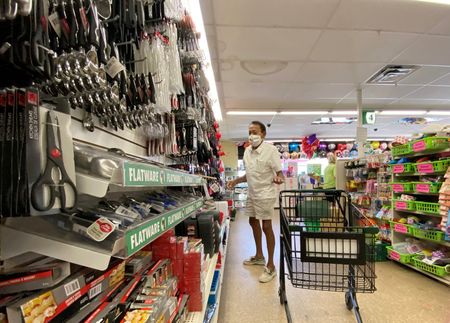
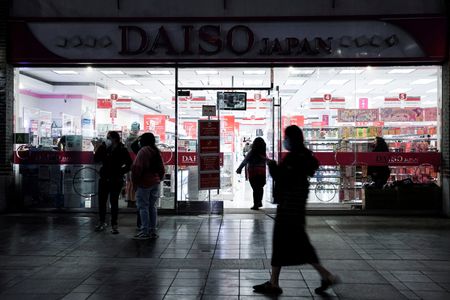
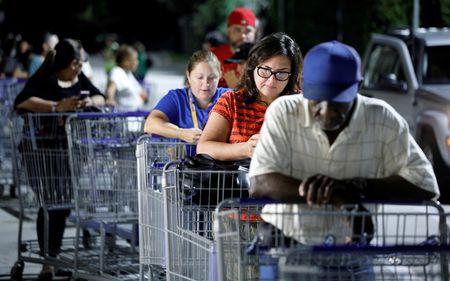
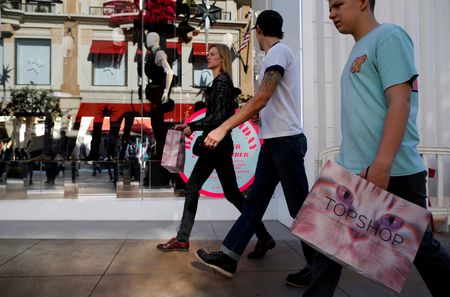
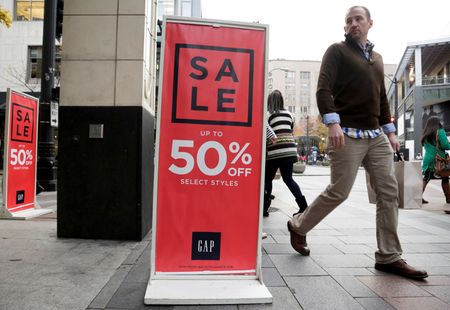
By Lucia Mutikani
WASHINGTON (Reuters) – U.S. retail sales rebounded strongly in June as Americans spent more on gasoline and other goods amid soaring inflation, which could allay fears of an imminent recession but not change the view that economic growth in the second quarter was tepid.
Retail sales rose 1.0% last month, the Commerce Department said on Friday. Data for May was revised up to show sales falling 0.1% instead of 0.3% as previously reported.
Economists polled by Reuters had forecast retail sales would increase 0.8%, with estimates ranging from as low as a 0.2% drop to as high as a 2.2% increase. Retail sales are mostly made up of goods, and are not adjusted for inflation.
“Padded by high savings and rising wages, American households are spending nearly as much money as they did earlier, but largely to keep up with higher prices, not to actually buy more stuff,” said Sal Guatieri, a senior economist at BMO Capital Markets in Toronto. “That said, today’s report may cool talk of a near-term recession.”
Annual consumer prices shot up 9.1% in June, the largest increase since November 1981, putting the Federal Reserve on track to deliver another 75-basis-point interest rate increase at the end of this month. The U.S. central bank has hiked its policy rate by 150 basis points since March.
The nearly broad increase in retail sales last month was led by receipts at auto dealerships, which rebounded 0.8% after declining 3.0% in May amid shortages.
Sales at service stations increased 3.6%. Gasoline prices surged in June, averaging above $5 per gallon, according to data from motorist advocacy group AAA. Prices at the pump have since declined from last month’s record peaks and were averaging $4.577 per gallon on Friday.
Excluding autos and gasoline, retail sales rose 0.7%. Receipts at bars and restaurants, the only services category in the retail sales report, increased 1.0%. Furniture store sales shot up 1.4%. But clothing store sales fell 0.4%.
Online store sales rebounded 2.2%. Sales at electronics and appliance retailers gained 0.4%. But sales at building material, garden equipment and supplies stores dropped 0.9%.
Receipts at sporting goods, hobby, musical instrument and book stores increased 0.8%.
Excluding automobiles, gasoline, building materials and food services, retail sales rose 0.8% in June. Data for May was revised lower to show these so-called core retail sales falling 0.3% instead of being unchanged as previously reported.
Core retail sales correspond most closely with the consumer spending component of gross domestic product. Despite June’s rise, inflation-adjusted core retail sales were softer, implying consumer spending likely stalled last quarter.
Second-quarter GDP estimates range from as low as a 1.7% annualized rate of decline to as high as a 1.0% pace of growth. The economy contracted at a 1.6% rate in the first quarter because of a record trade deficit.
With the labor market generating jobs at a brisk clip and 11.3 million unfilled positions at the end of May, a second straight quarterly decline in GDP would not necessarily mean the economy was in recession. Excess inventories would probably account for much of any decline in GDP last quarter.
(Reporting by Lucia Mutikani; Editing by Nick Zieminski and Paul Simao)

